Abstract
OBJECTIVE. This study examines conversion to Medicaid as a payment source among a cohort of newly admitted nursing home residents. DATA SOURCE. The longitudinal data used came from regular assessments of residents in the National Health Corporation's 43 for-profit nursing homes in Missouri, Kentucky, South Carolina, and Tennessee. This information system tracked all residents who were discharged, providing a comprehensive record that may have spanned multiple admissions. STUDY DESIGN. Using survival analysis methods, Cox regression, and survival trees, we contrasted the effect of state, initial payment source, education, age, and functional status on the rate of spend-down to Medicaid. DATA EXTRACTION METHODS. New-admission cohorts were created by linking an admission record for a newly admitted resident with all subsequent assessments and follow-up records to ascertain the precise dates of any payment source changes and other discharge transitions. PRINCIPAL FINDINGS. For the 1,849 individuals who were admitted as self-payers and who were still in the nursing home at the end of one year, there is a 19 percent probability of converting to Medicaid. All analytic methods revealed that education, age, and state of residence were predictive of spend-down among residents who were admitted as self-payers. CONCLUSIONS. Our results confirm the effect of education as an SES indicator and state as a proxy for Medicaid policy on spend-down. Future research should model the effects and duration of intervening hospitalizations and other transitions on Medicaid spend-down among new admissions.
Full text
PDF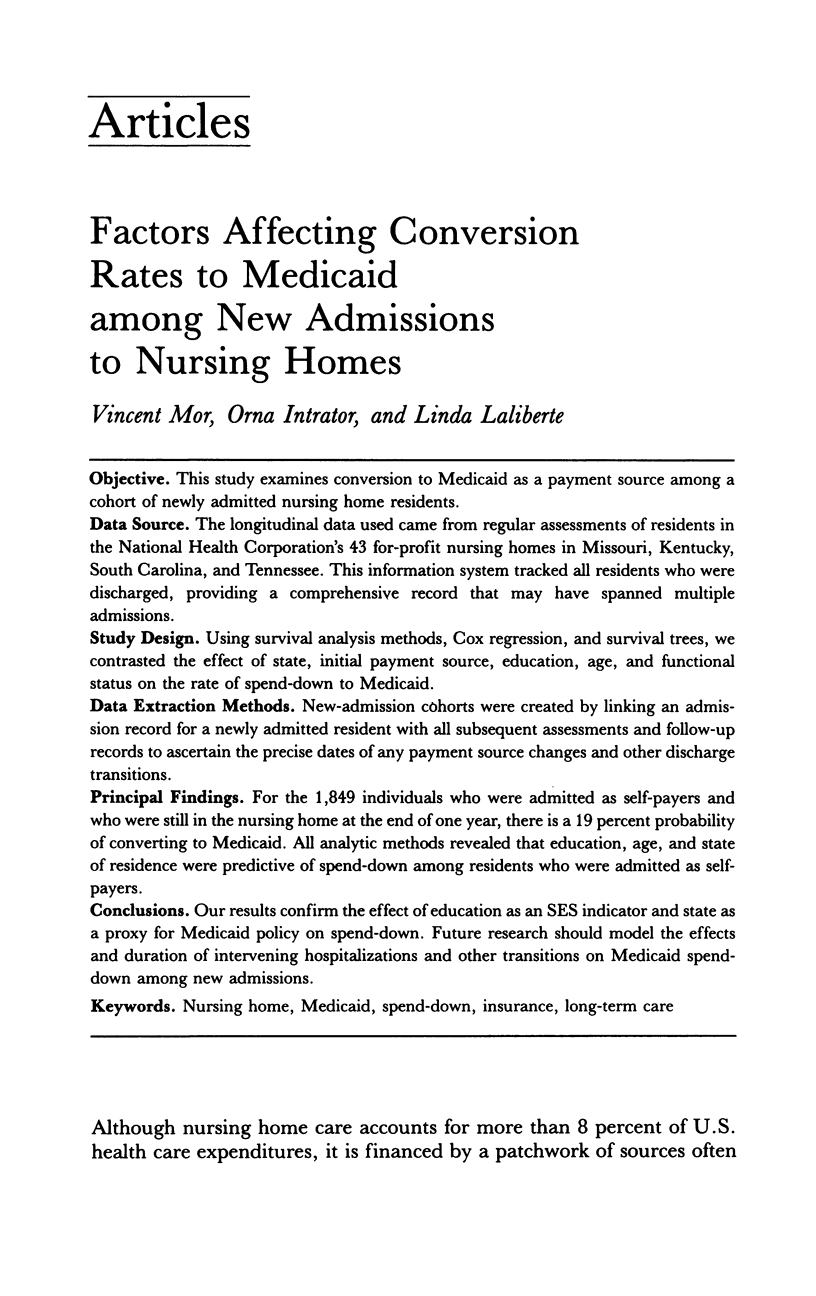
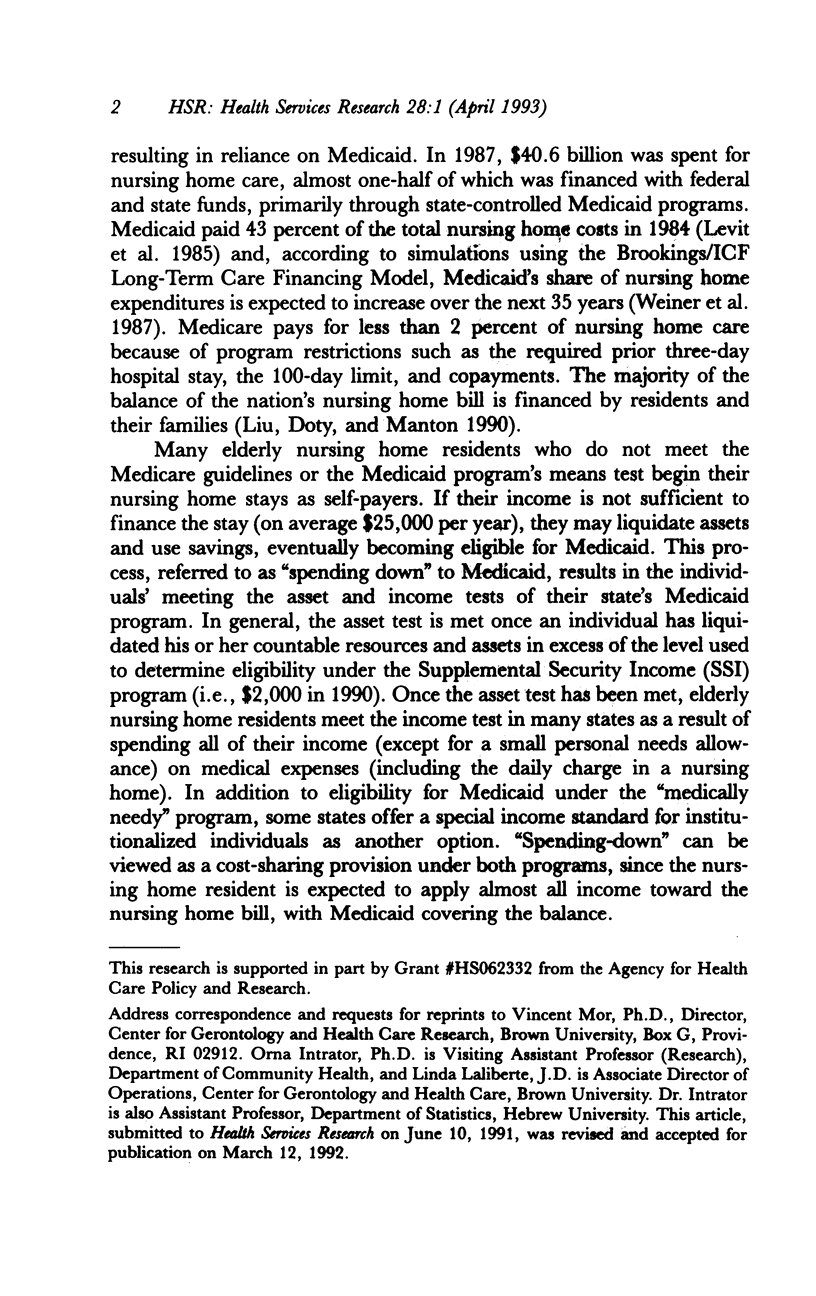

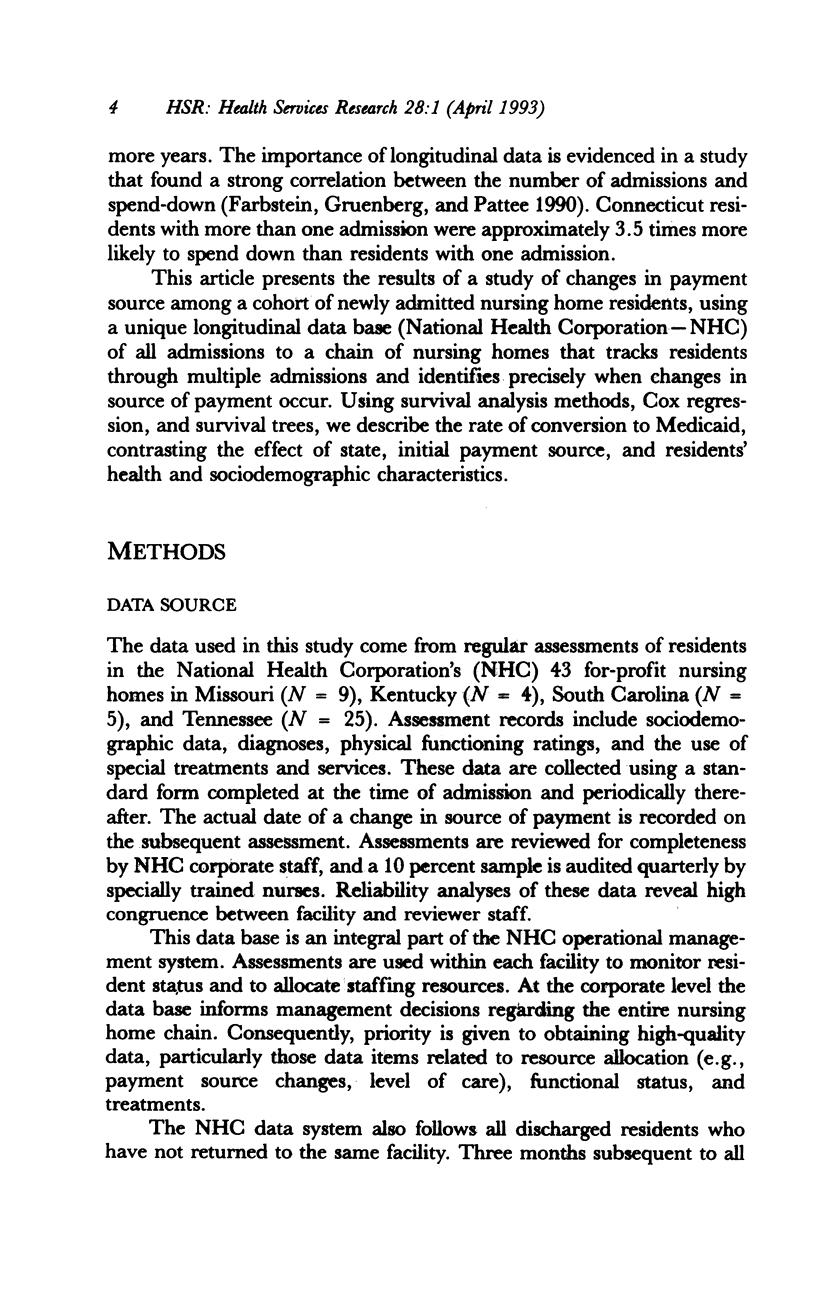
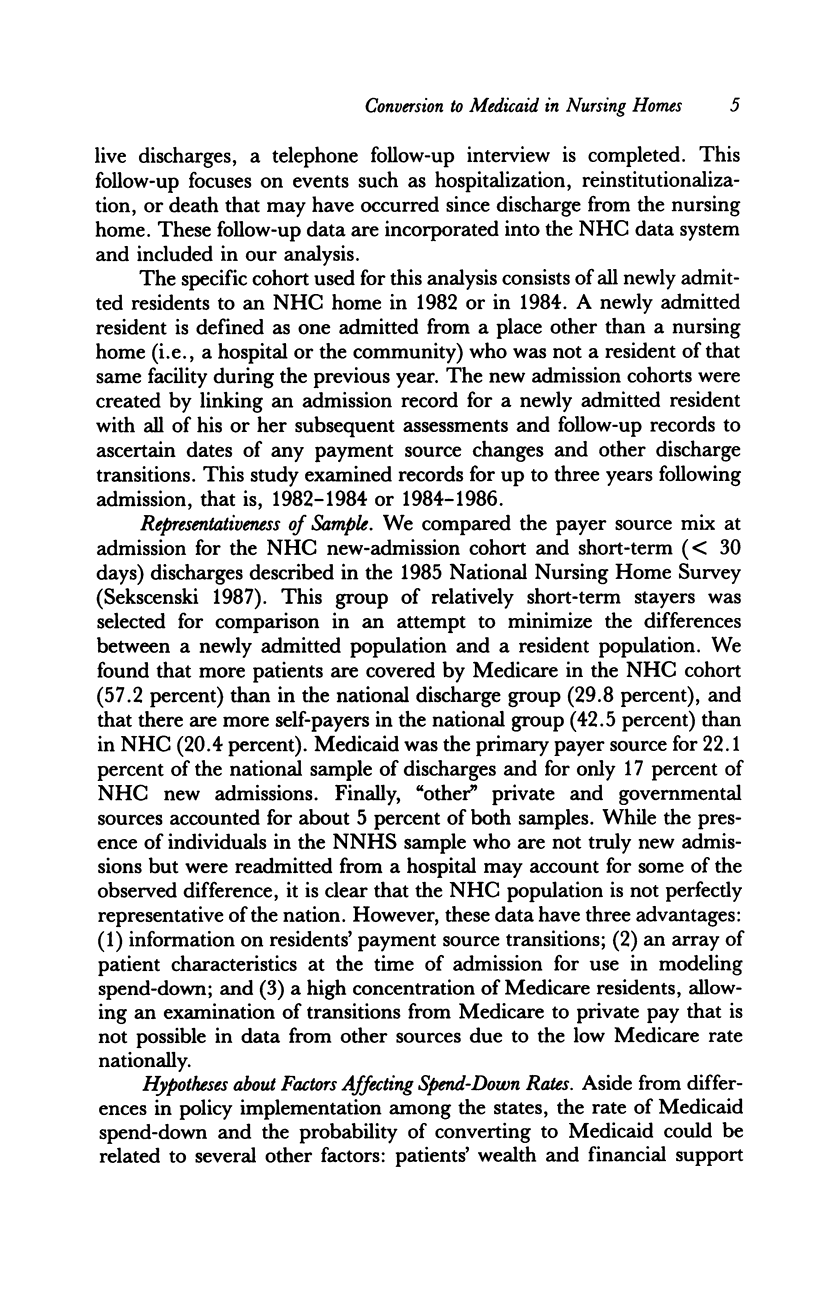
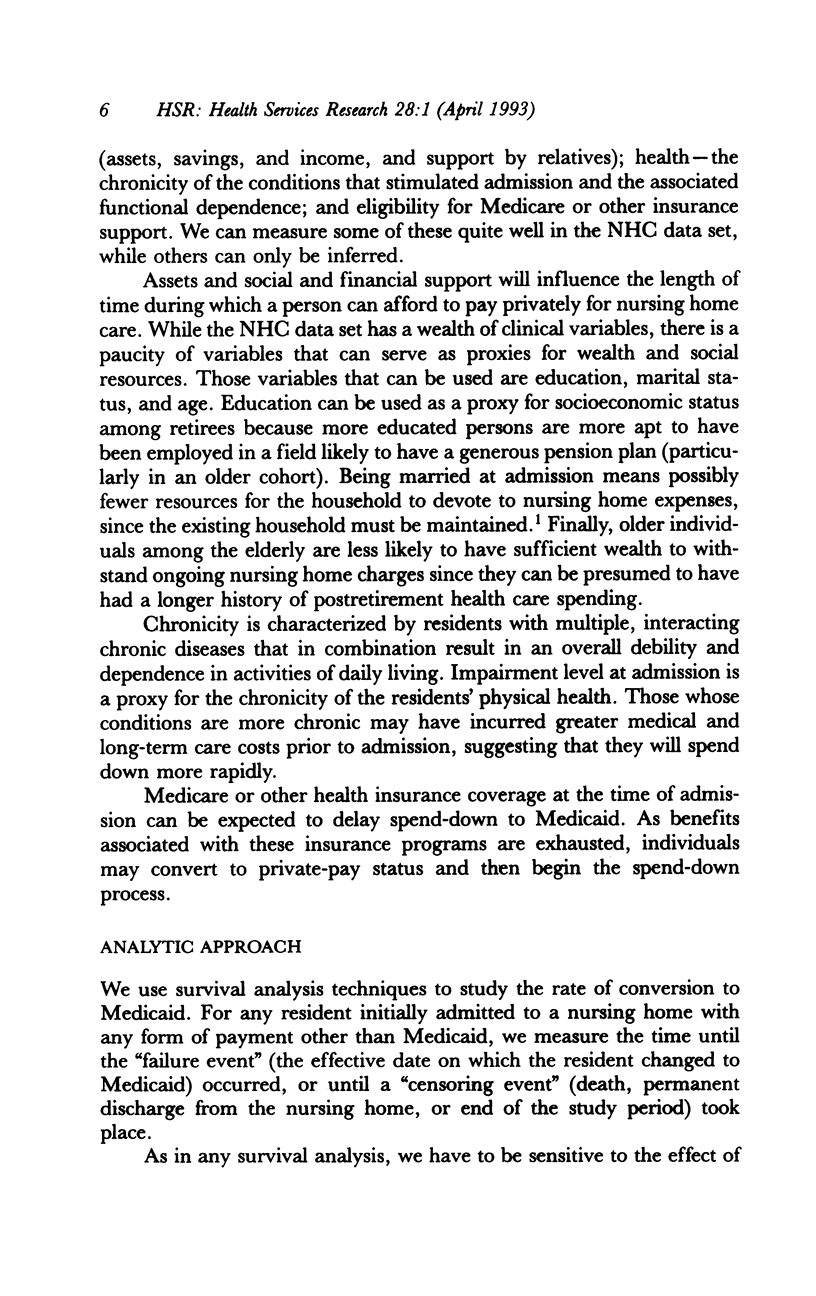
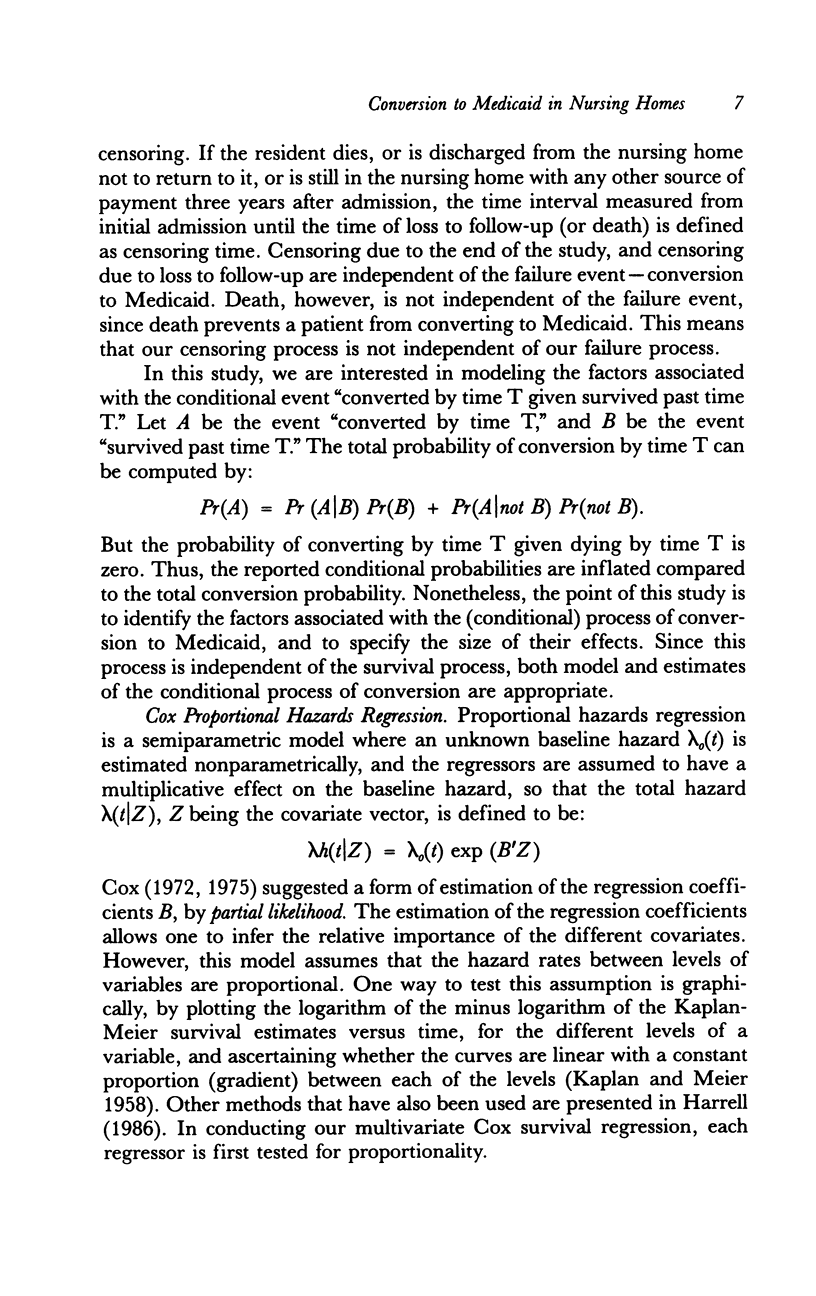
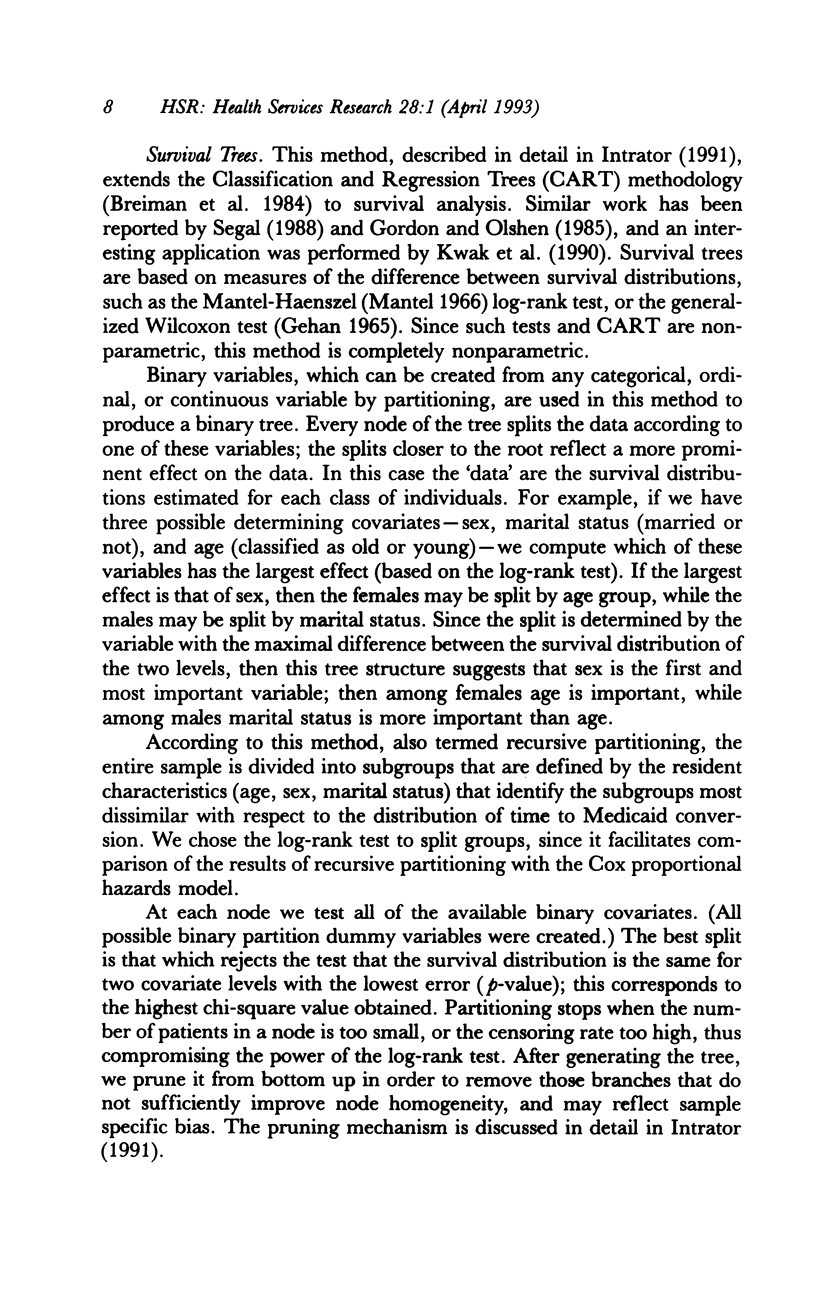
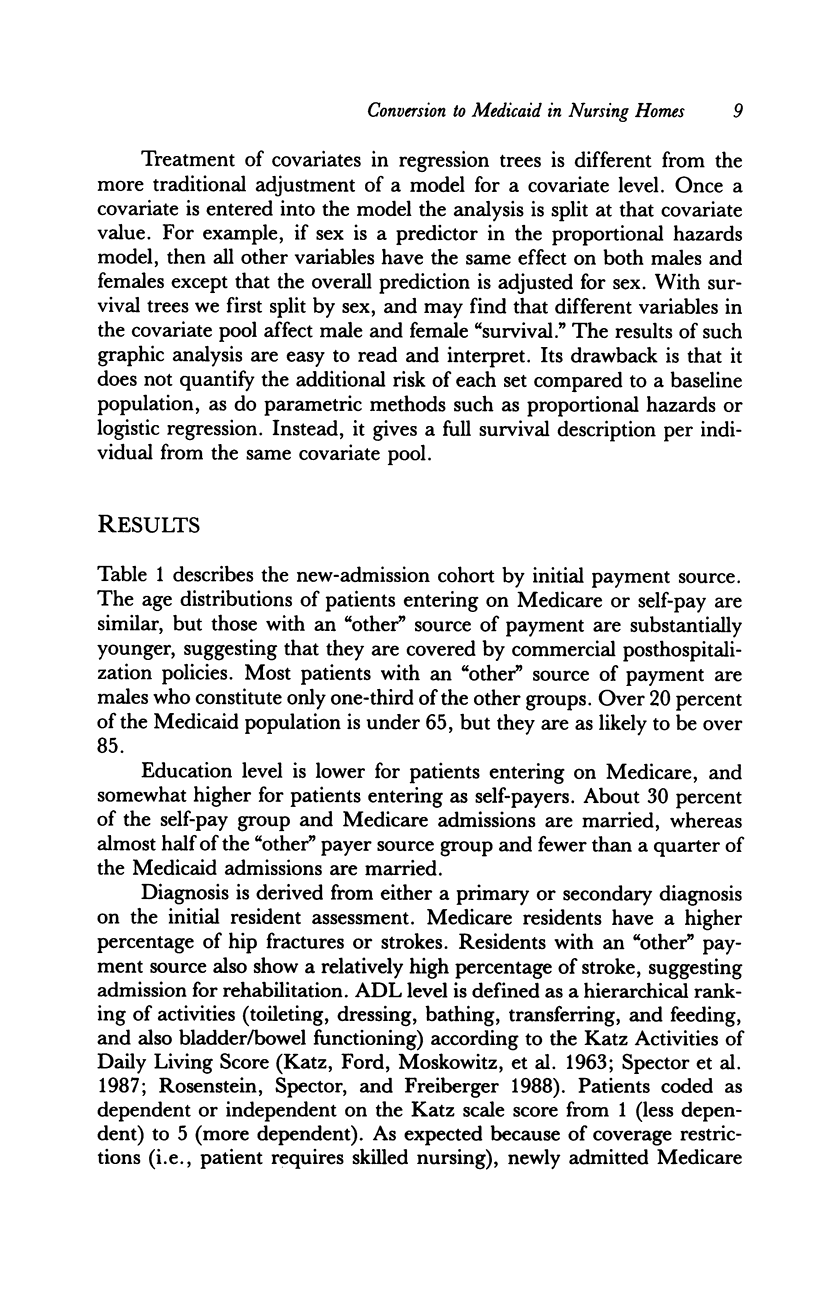
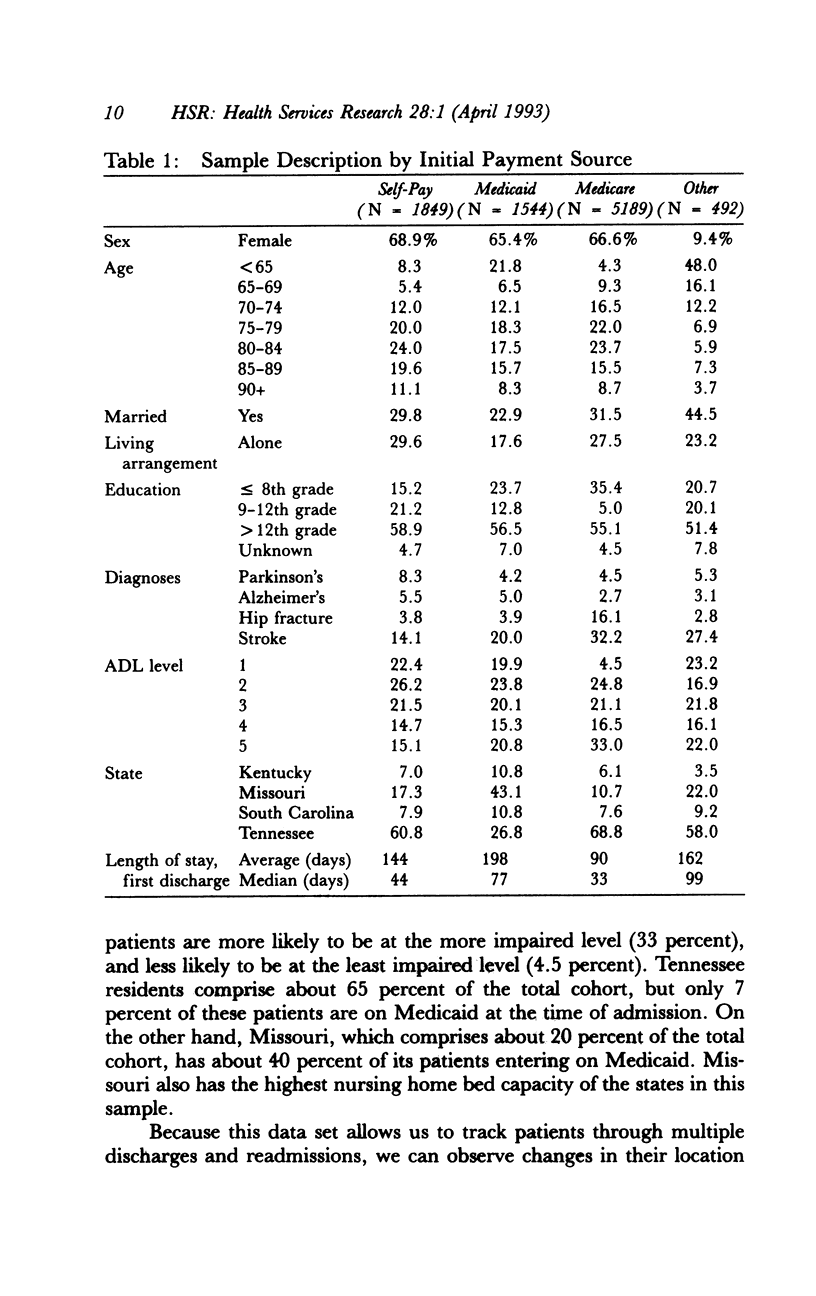
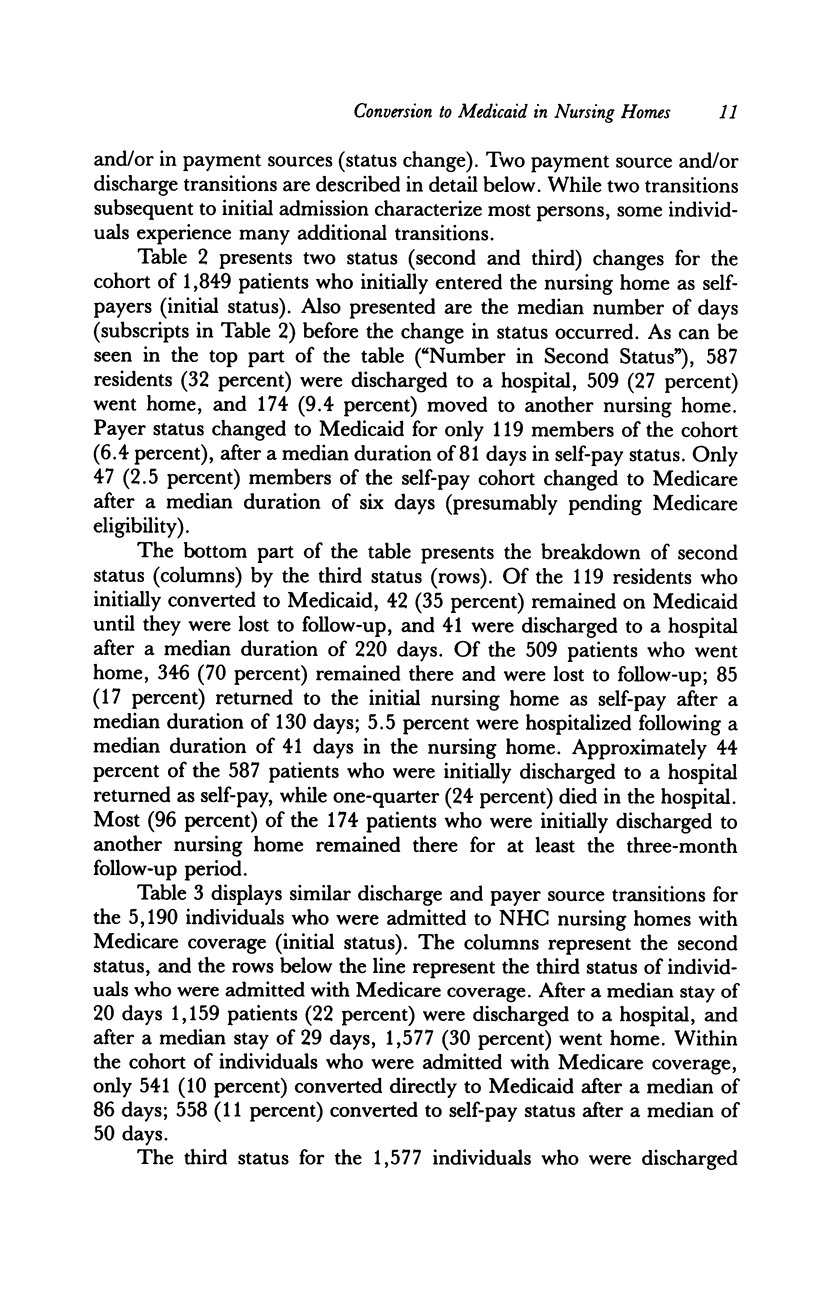
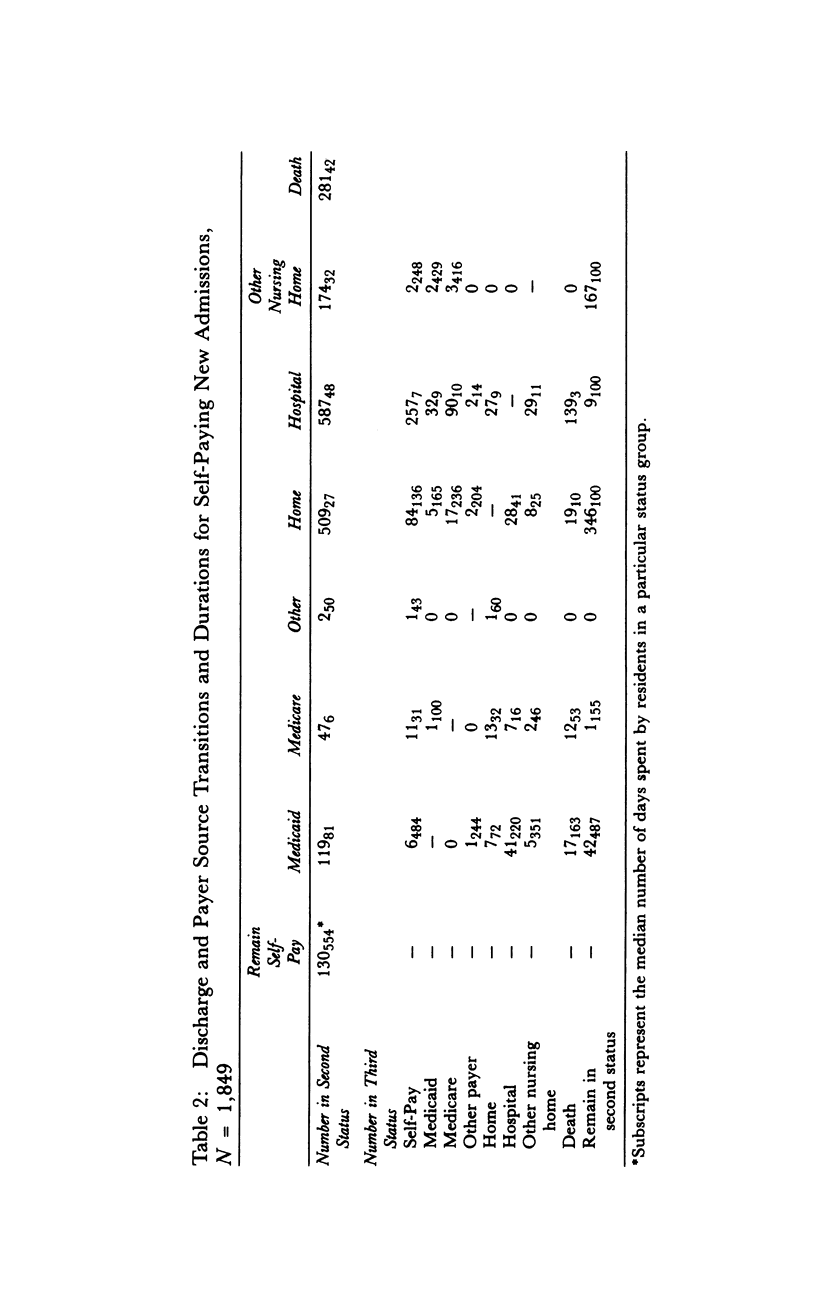
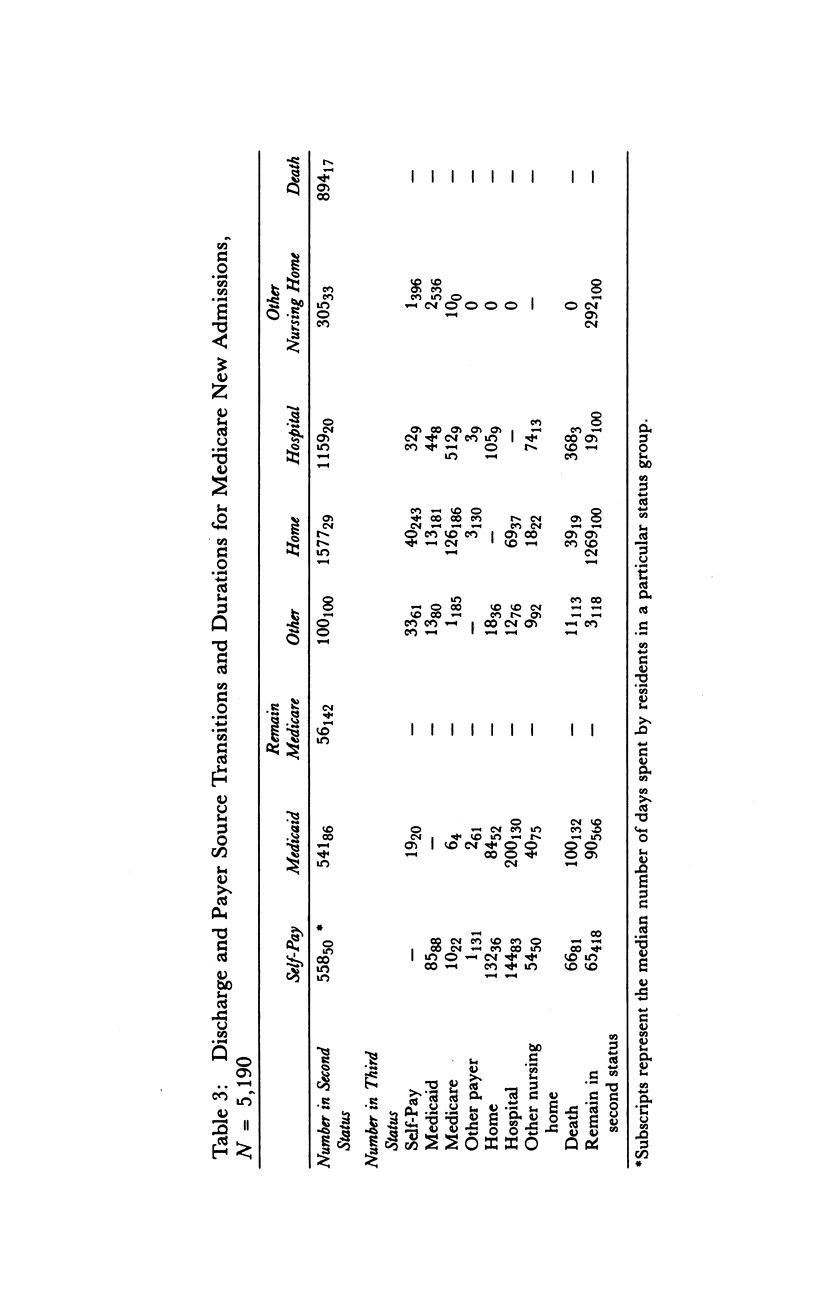
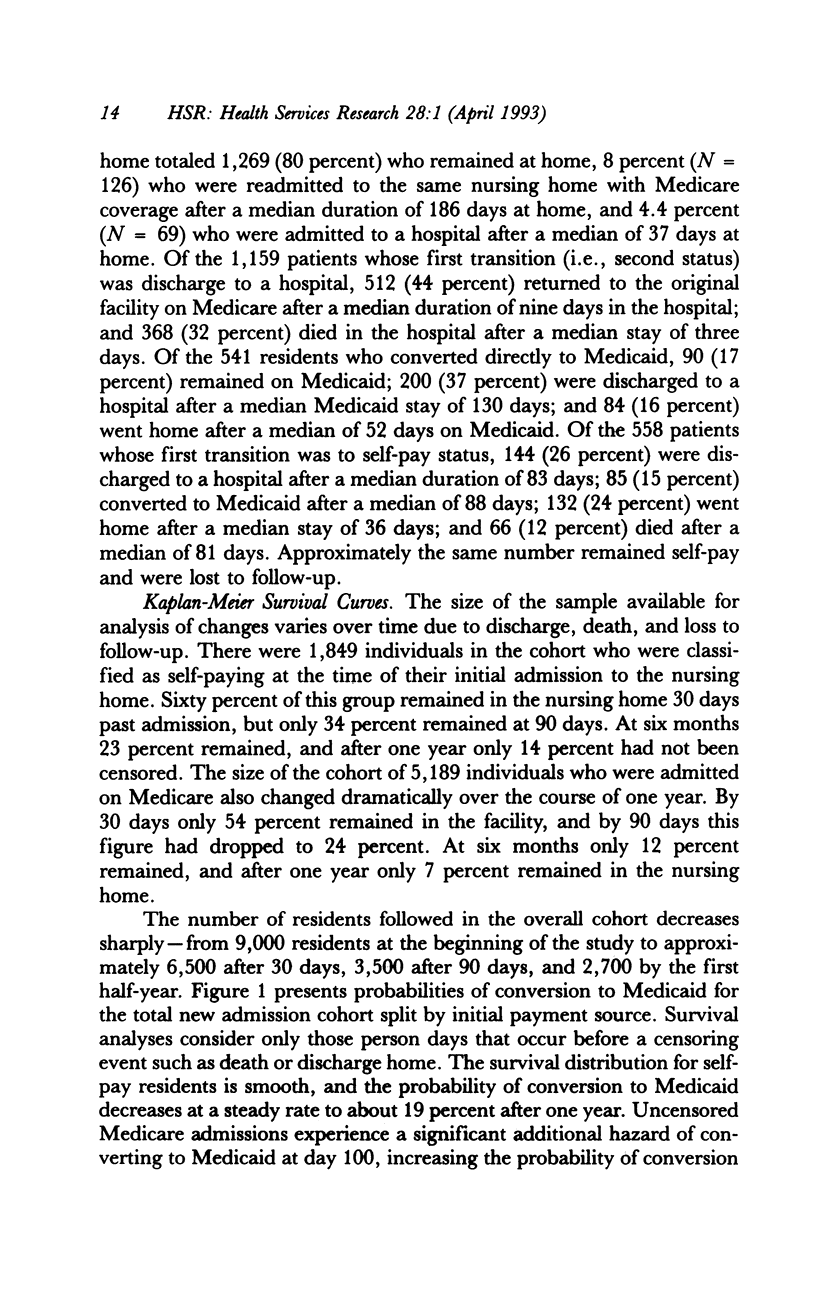
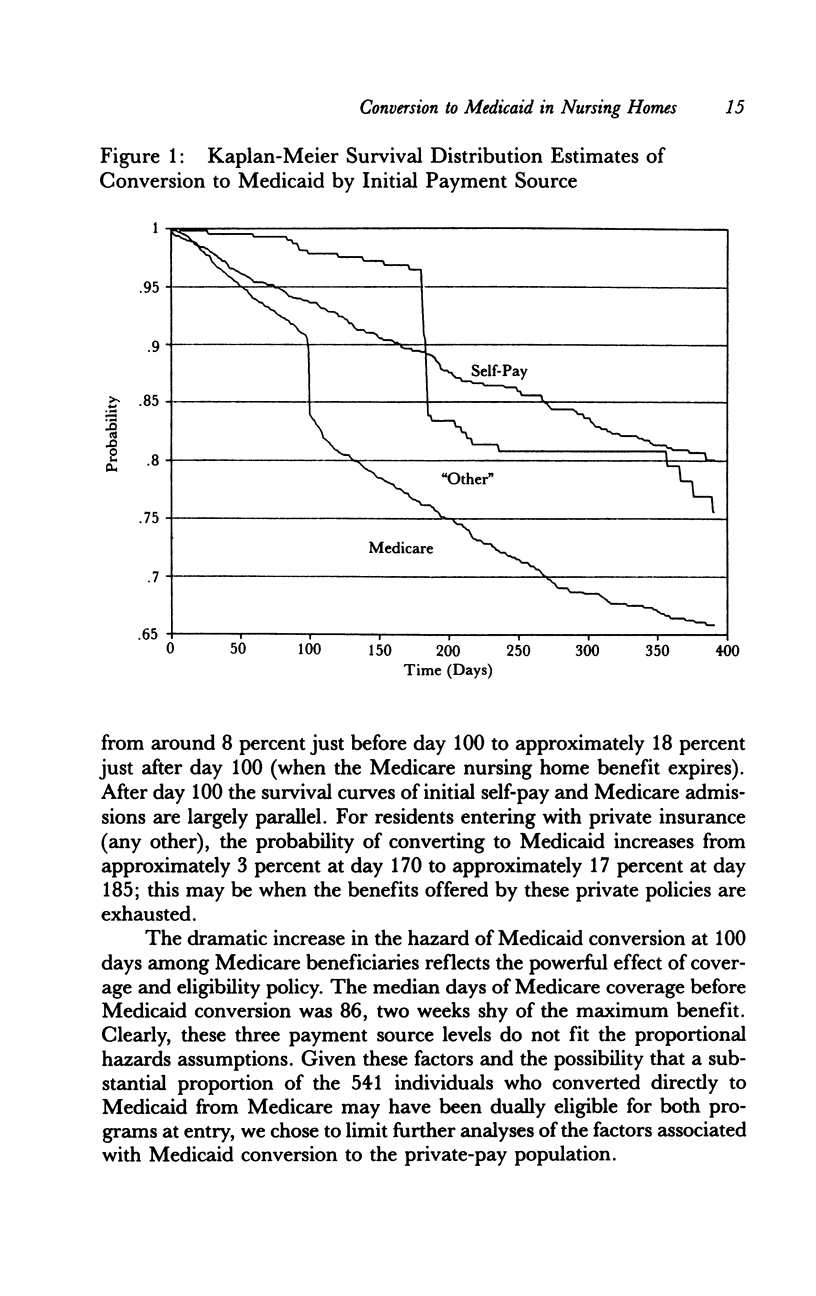
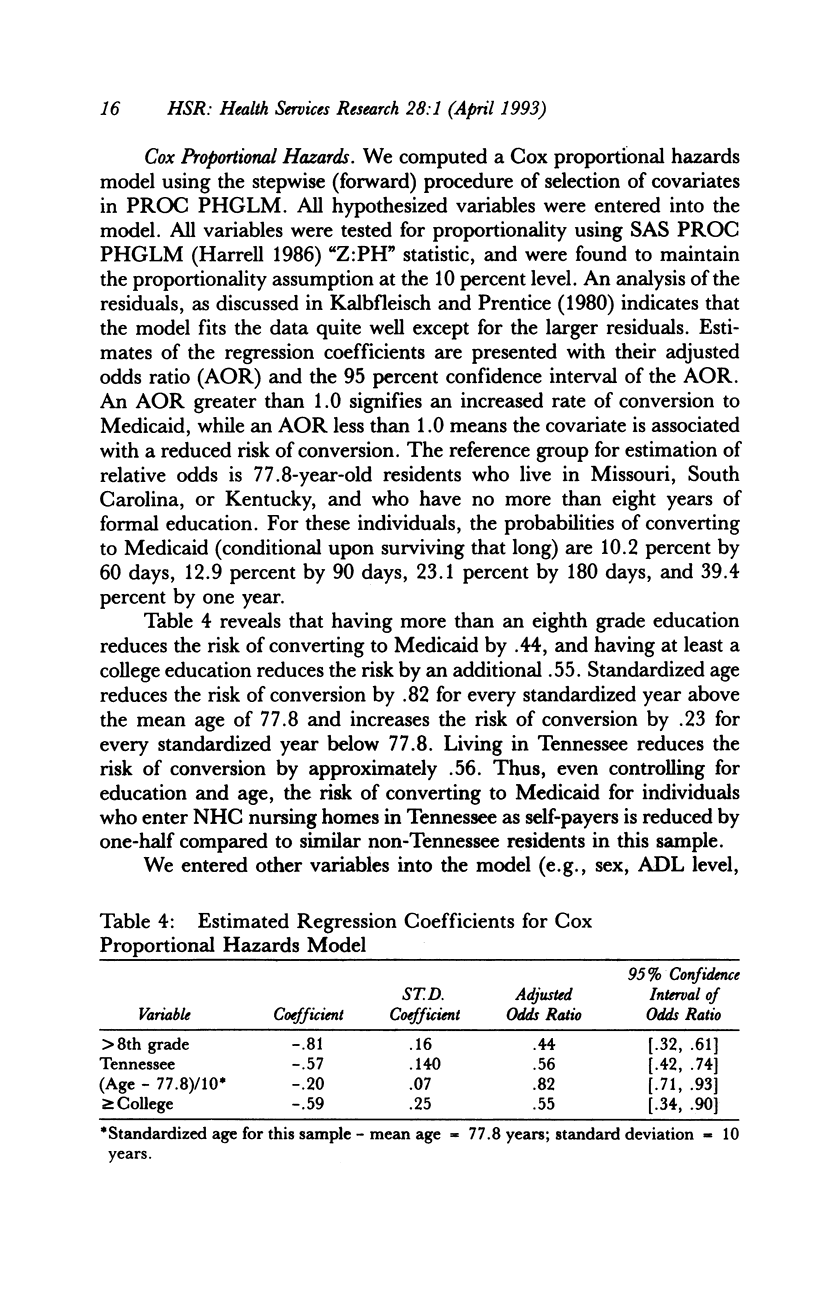
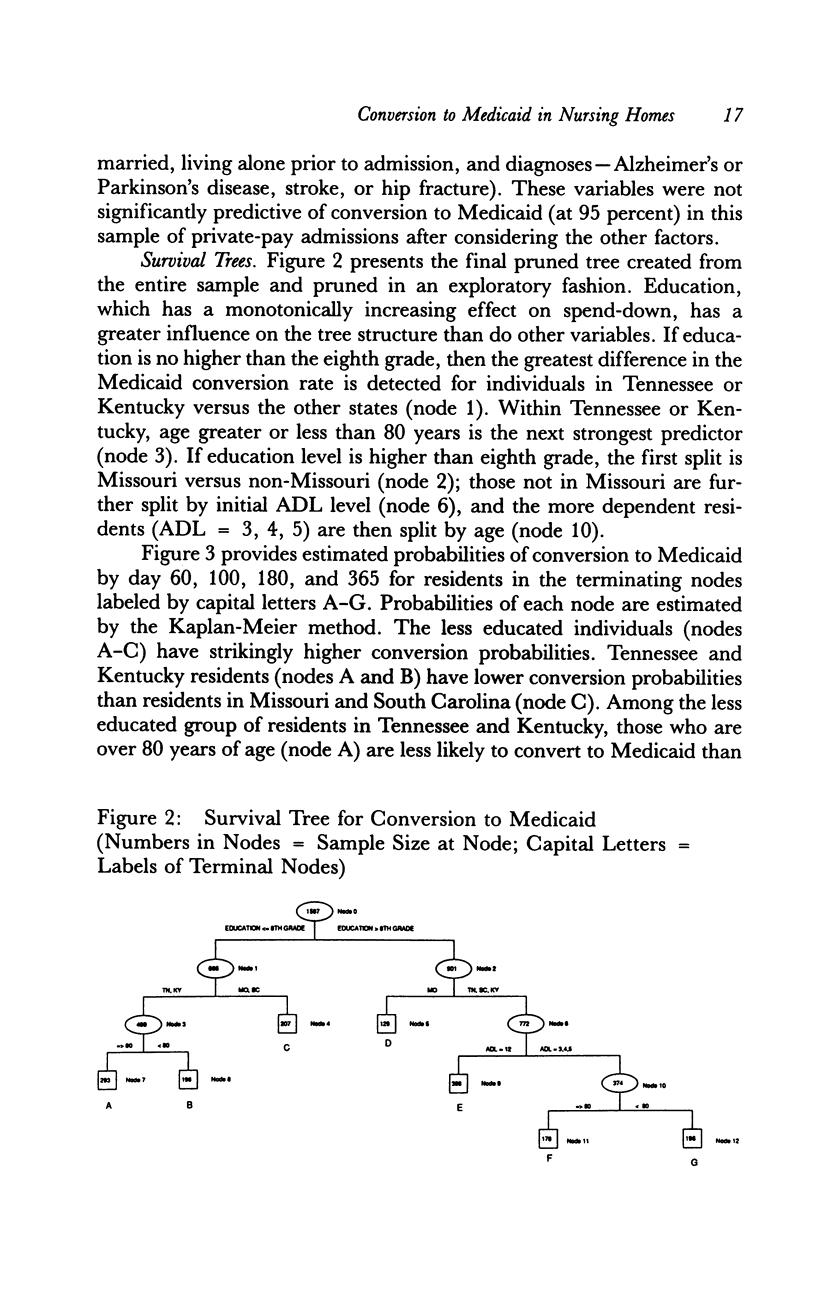
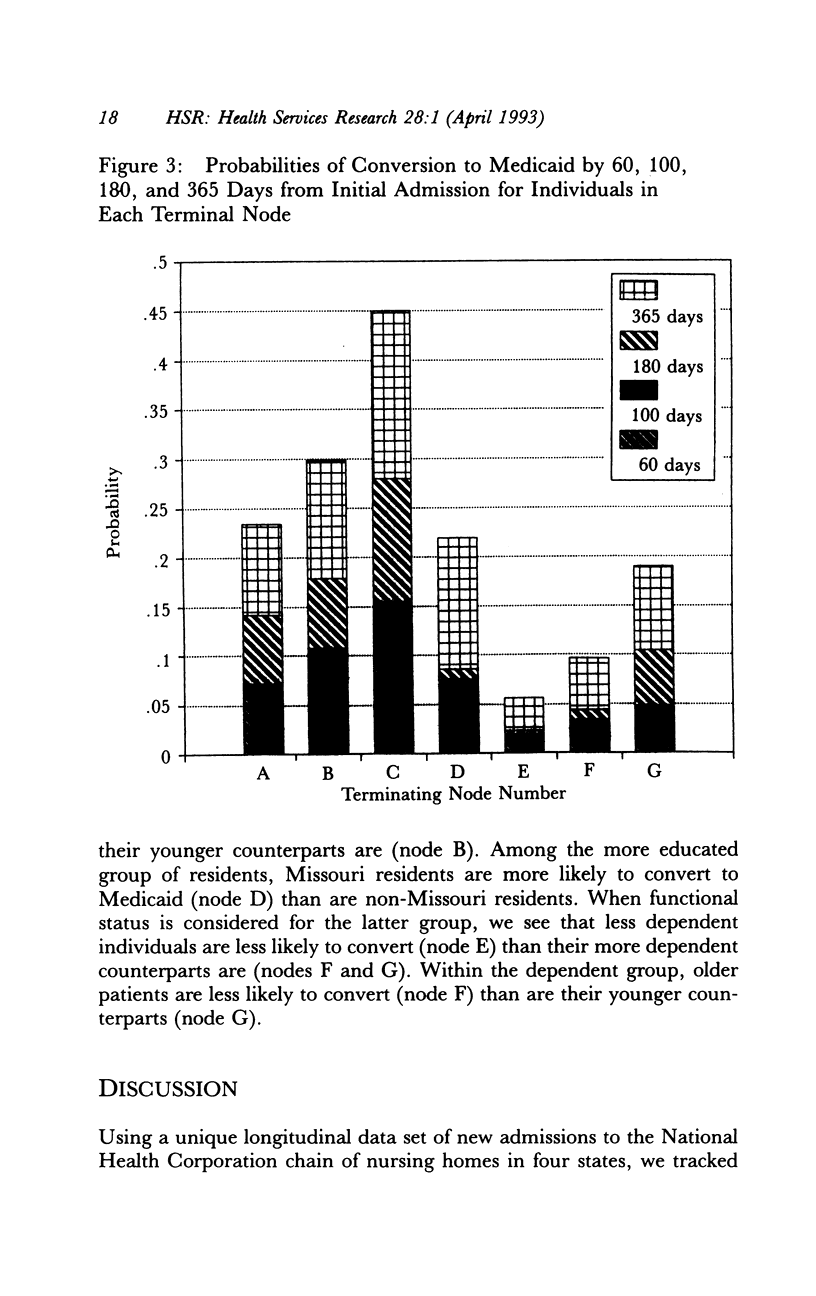
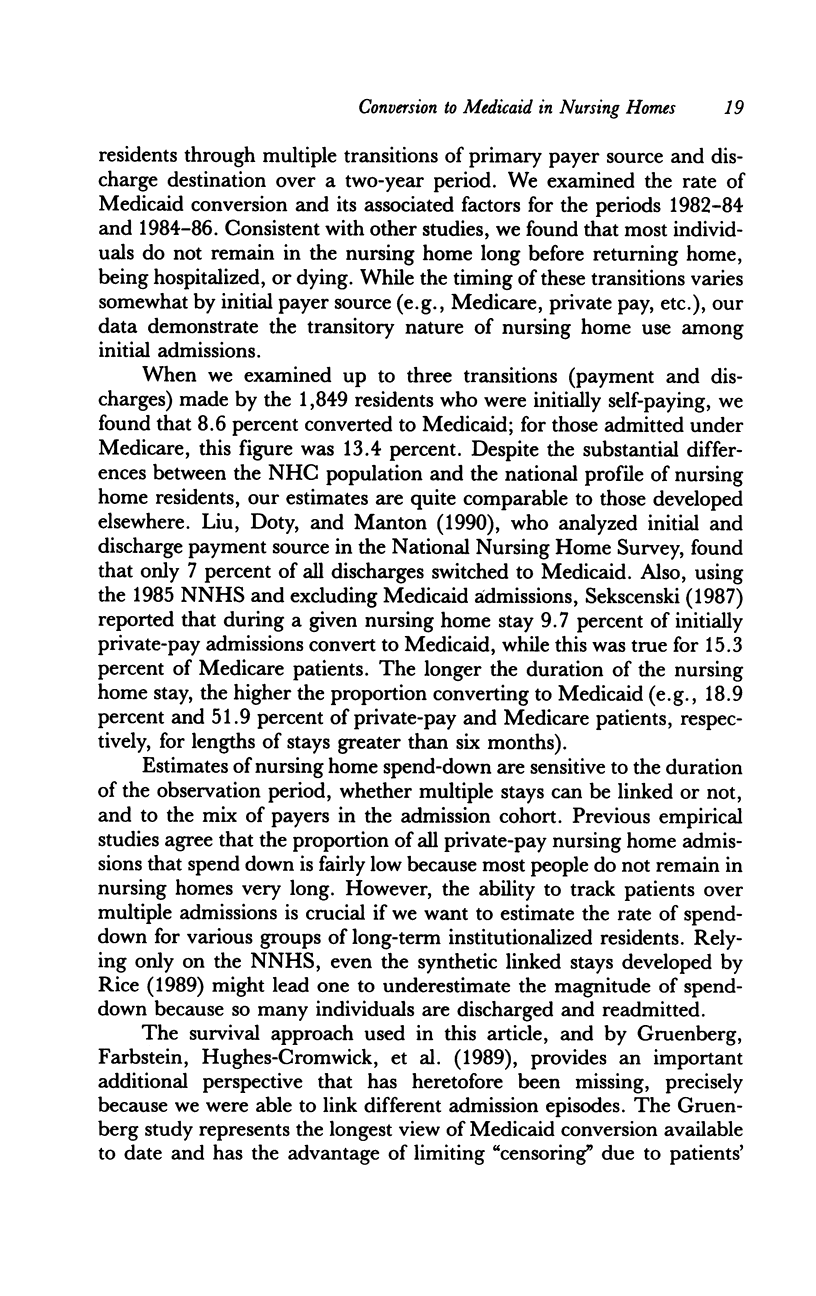
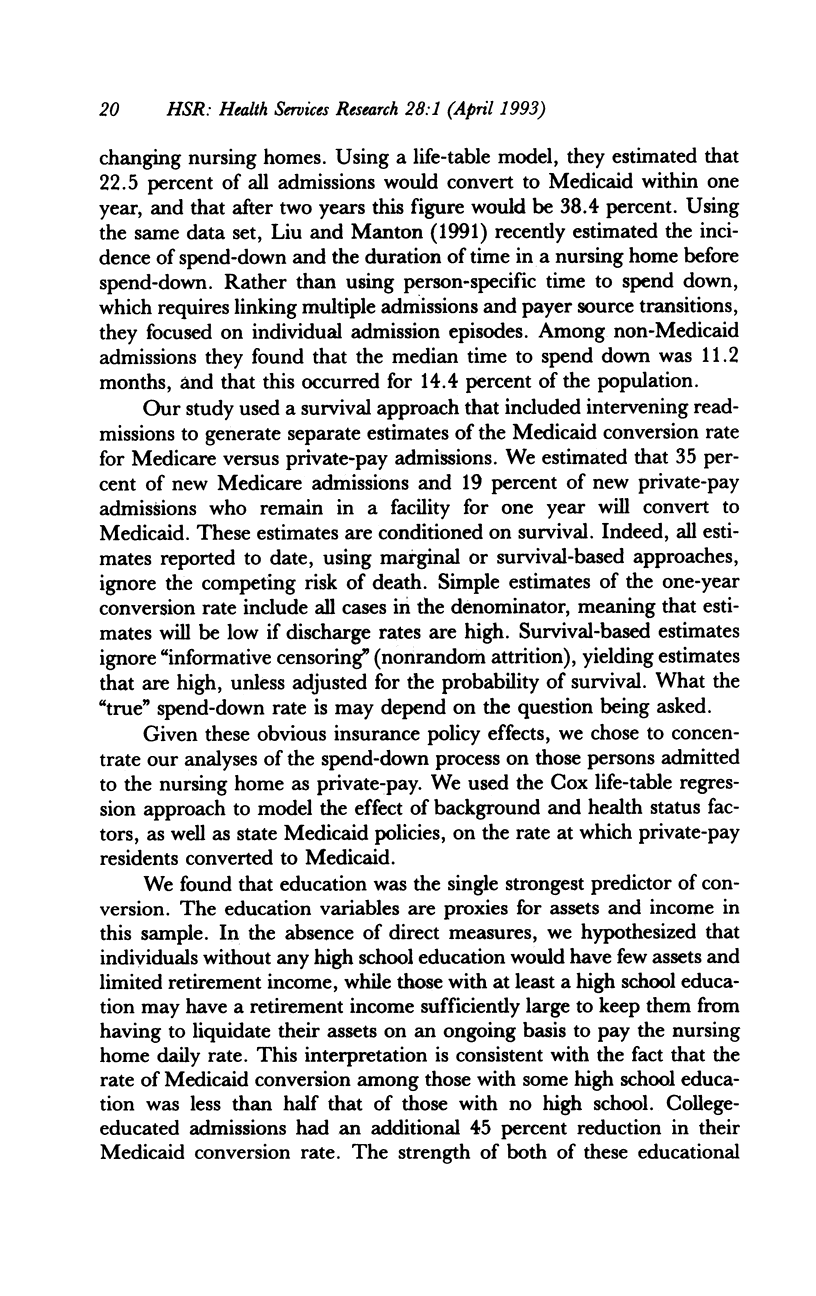
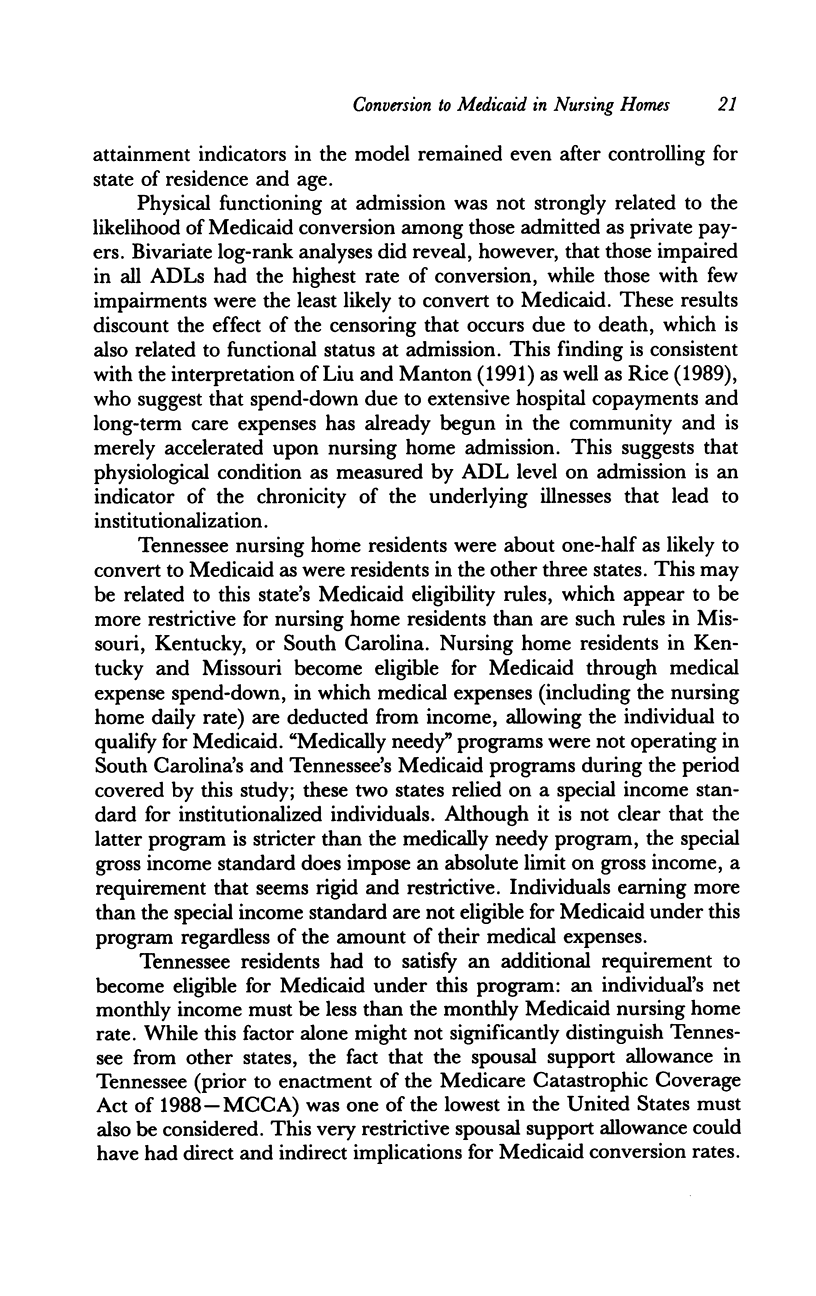
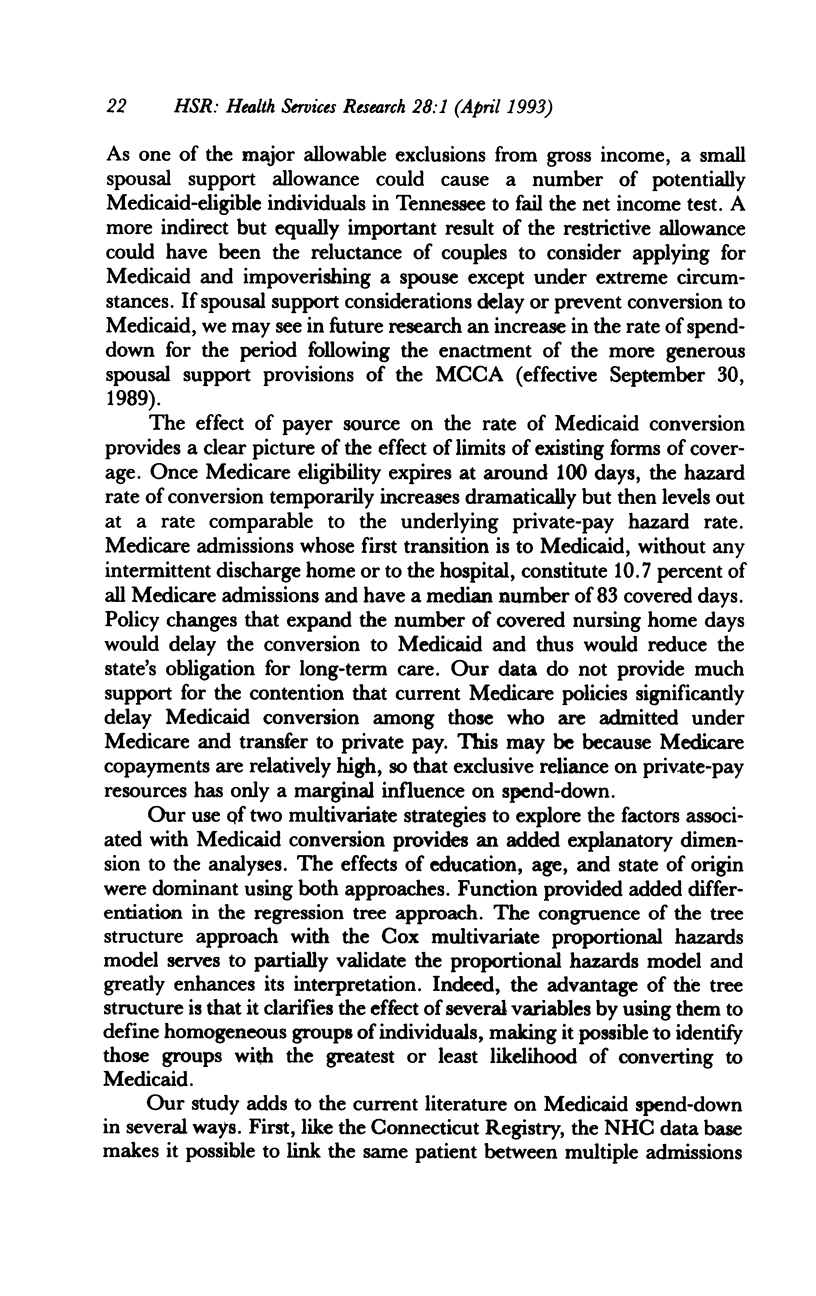
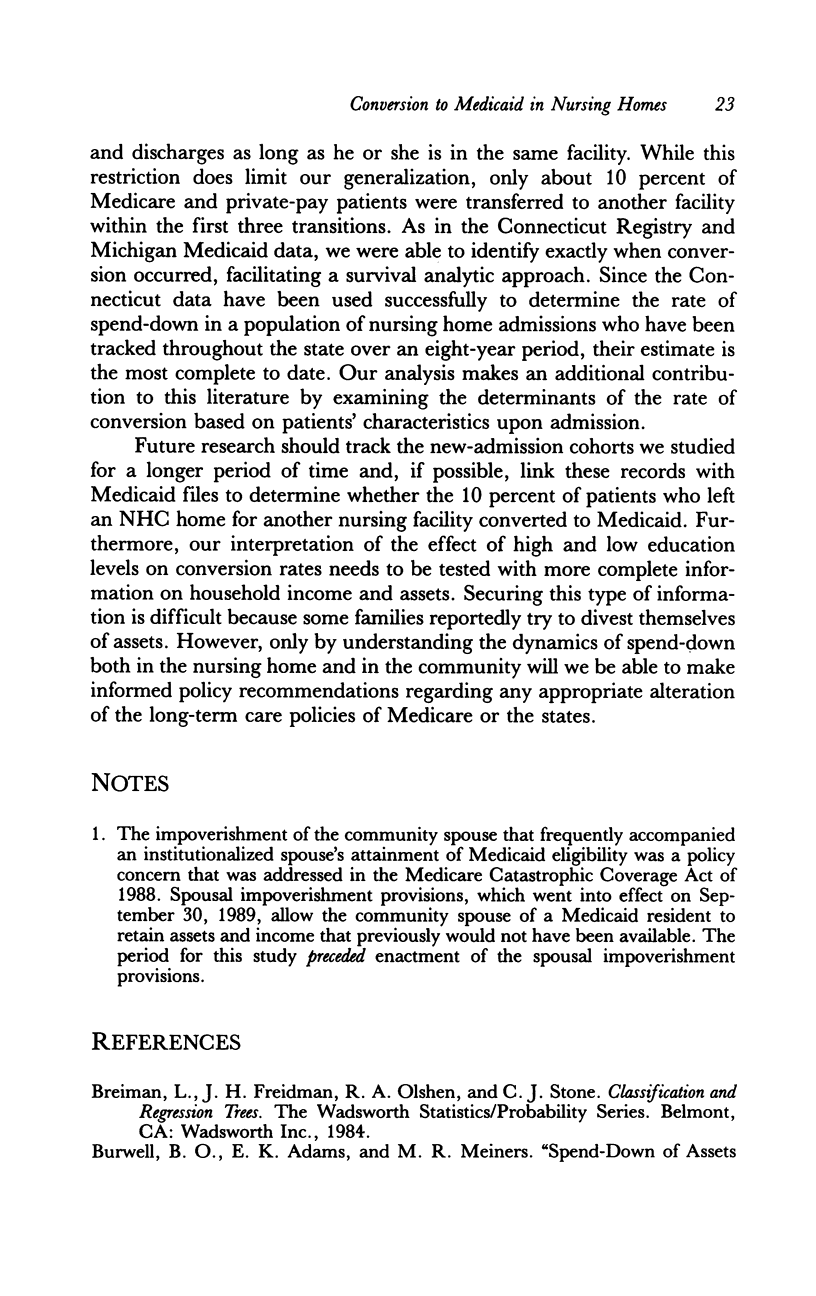
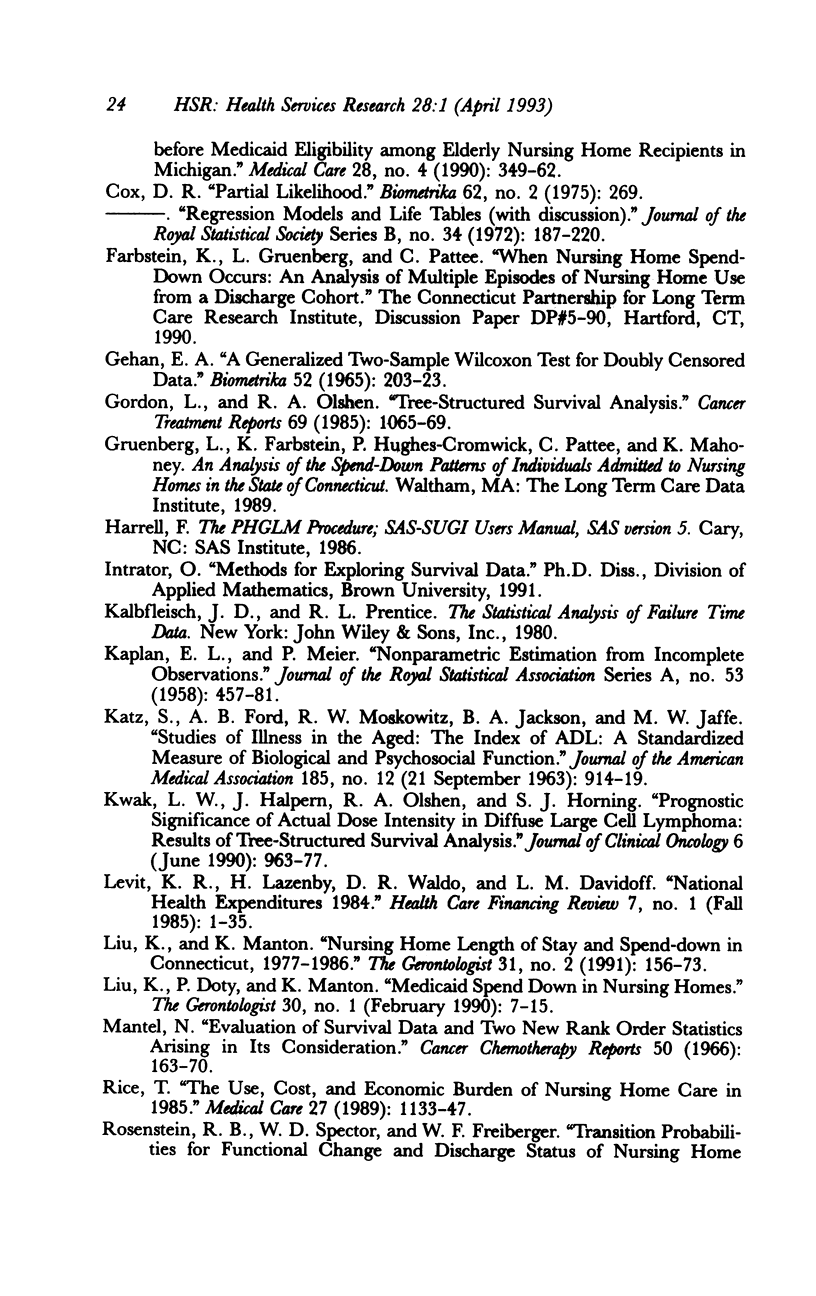
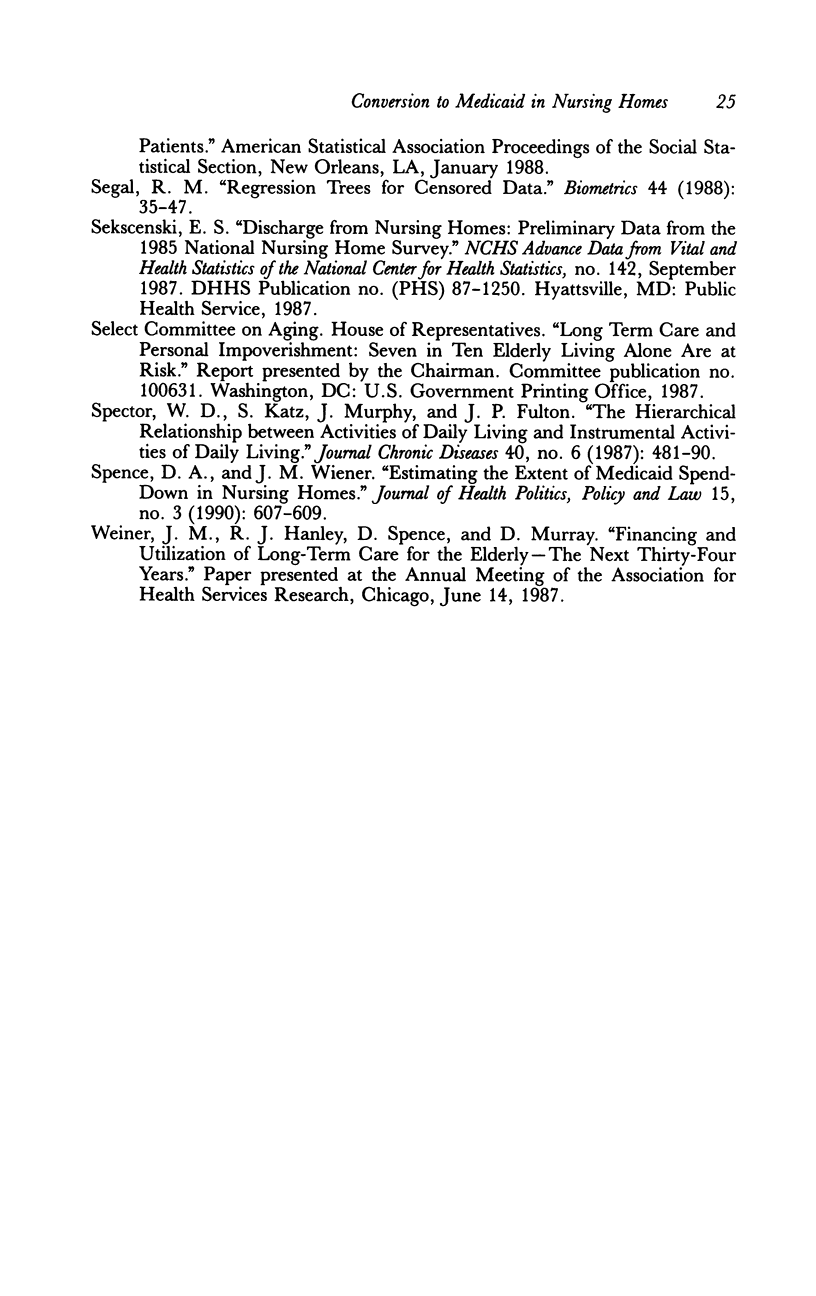
Selected References
These references are in PubMed. This may not be the complete list of references from this article.
- Bulcroft K., Kielkopf M. R., Tripp K. Elderly wards and their legal guardians: analysis of county probate records in Ohio and Washington. Gerontologist. 1991 Apr;31(2):156–164. doi: 10.1093/geront/31.2.156. [DOI] [PubMed] [Google Scholar]
- Burwell B. O., Adams E. K., Meiners M. R. Spend-down of assets before Medicaid eligibility among elderly nursing-home recipients in Michigan. Med Care. 1990 Apr;28(4):349–362. doi: 10.1097/00005650-199004000-00006. [DOI] [PubMed] [Google Scholar]
- GEHAN E. A. A GENERALIZED WILCOXON TEST FOR COMPARING ARBITRARILY SINGLY-CENSORED SAMPLES. Biometrika. 1965 Jun;52:203–223. [PubMed] [Google Scholar]
- Gordon L., Olshen R. A. Tree-structured survival analysis. Cancer Treat Rep. 1985 Oct;69(10):1065–1069. [PubMed] [Google Scholar]
- KATZ S., FORD A. B., MOSKOWITZ R. W., JACKSON B. A., JAFFE M. W. STUDIES OF ILLNESS IN THE AGED. THE INDEX OF ADL: A STANDARDIZED MEASURE OF BIOLOGICAL AND PSYCHOSOCIAL FUNCTION. JAMA. 1963 Sep 21;185:914–919. doi: 10.1001/jama.1963.03060120024016. [DOI] [PubMed] [Google Scholar]
- Kwak L. W., Halpern J., Olshen R. A., Horning S. J. Prognostic significance of actual dose intensity in diffuse large-cell lymphoma: results of a tree-structured survival analysis. J Clin Oncol. 1990 Jun;8(6):963–977. doi: 10.1200/JCO.1990.8.6.963. [DOI] [PubMed] [Google Scholar]
- Levit K. R., Lazenby H., Waldo D. R., Davidoff L. M. National health expenditures, 1984. Health Care Financ Rev. 1985 Fall;7(1):1–35. [PMC free article] [PubMed] [Google Scholar]
- Liu K., Doty P., Manton K. Medicaid spenddown in nursing homes. Gerontologist. 1990 Feb;30(1):7–15. doi: 10.1093/geront/30.1.7. [DOI] [PubMed] [Google Scholar]
- Mantel N. Evaluation of survival data and two new rank order statistics arising in its consideration. Cancer Chemother Rep. 1966 Mar;50(3):163–170. [PubMed] [Google Scholar]
- Rice T. The use, cost, and economic burden of nursing-home care in 1985. Med Care. 1989 Dec;27(12):1133–1147. doi: 10.1097/00005650-198912000-00005. [DOI] [PubMed] [Google Scholar]
- Spector W. D., Katz S., Murphy J. B., Fulton J. P. The hierarchical relationship between activities of daily living and instrumental activities of daily living. J Chronic Dis. 1987;40(6):481–489. doi: 10.1016/0021-9681(87)90004-x. [DOI] [PubMed] [Google Scholar]
- Spence D. A., Wiener J. M. Estimating the extent of Medicaid spend-down in nursing homes. J Health Polit Policy Law. 1990 Fall;15(3):607–626. doi: 10.1215/03616878-15-3-607. [DOI] [PubMed] [Google Scholar]


